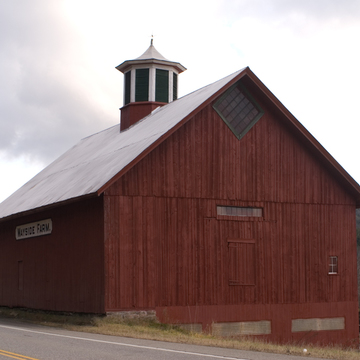Taylor Farm illustrates the late settlement and subsequent agricultural and building heritage of the upper Lamoille Valley. During the American Revolution, Thomas Taylor served as a lieutenant in a regiment of Light Dragoons under the command of Elisha Sheldon (one of the proprietors of Sheldon). In 1789, Taylor, his wife, and son immigrated to Wolcott, becoming some of the first settlers in the then-remote region. In 1791 he built the town's first sawmill and a few years later he constructed its first wood-frame house. This was a small Cape-type dwelling on this farm for Taylor's son Ebenezer and his family. Around 1850, Ebenezer's son Harvey erected a Classic Cottage farmhouse, a type then typical throughout the county. A finely detailed Greek Revival building, it has substantial paneled corner pilasters, eaves entablature, and pilasters that flank the entrance. After the Civil War, the two-hundred-and-ten-acre farm passed to Cornelius A. Reed, who had married Harvey's daughter Mary in 1855, and about 1880 he built a by-then old-fashioned ten-cow Yankee barn, with a half-story hay loft above a first-floor stable that is above a shallow manure basement. By 1880 most farmers preferred the late bank barn design, with a drive directly into the haymow and a more substantial basement, often to accommodate hogs and sheep. A traditional post-and-beam structure with circular-sawn members, the barn is a local landmark with its hexagonal louvered cupola and its location just at the edge of VT 15. Earl Guyer's sawmill, located nearby on the site of the Taylors' old mill, likely produced the posts and lumber for the barn, and its builder probably was Mary's brother Levi Taylor, who was a carpenter and joiner, as well as a sawyer at Guyer's mill.
You are here
Taylor Farm
If SAH Archipedia has been useful to you, please consider supporting it.
SAH Archipedia tells the story of the United States through its buildings, landscapes, and cities. This freely available resource empowers the public with authoritative knowledge that deepens their understanding and appreciation of the built environment. But the Society of Architectural Historians, which created SAH Archipedia with University of Virginia Press, needs your support to maintain the high-caliber research, writing, photography, cartography, editing, design, and programming that make SAH Archipedia a trusted online resource available to all who value the history of place, heritage tourism, and learning.





















